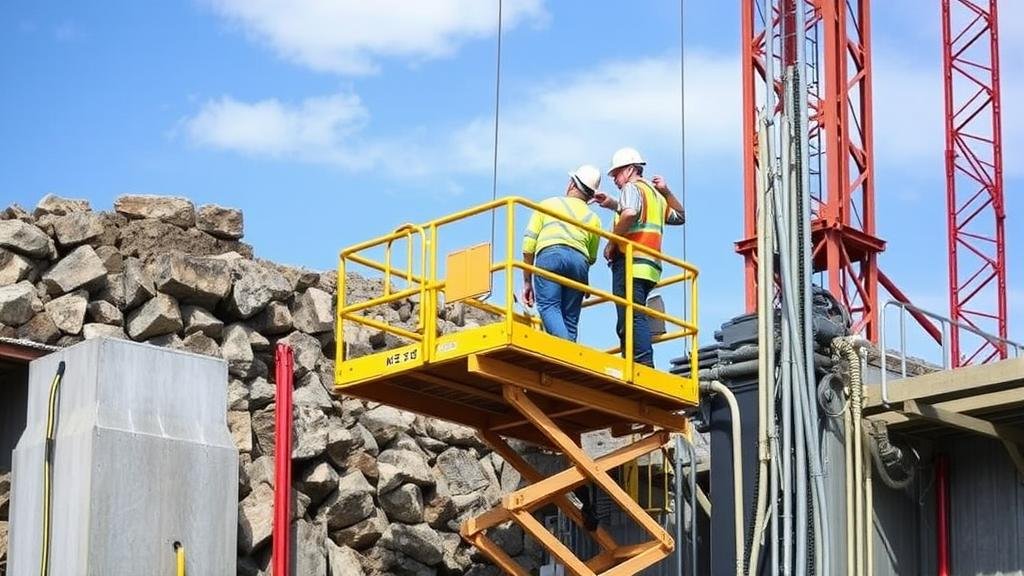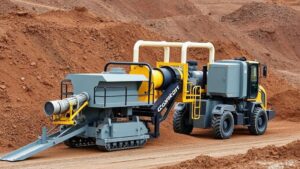Building Portable Platforms for Vertical Shaft Operations
Building Portable Platforms for Vertical Shaft Operations
The construction and mining industries frequently require the use of vertical shafts for various operations such as ventilation, access, and extraction of resources. A portable platform designed for vertical shaft operations offers flexibility, safety, and efficiency in such challenging environments. This article explores the essentials of building these platforms, including design considerations, materials, and real-world case studies.
Understanding Portable Platforms
A portable platform is a temporary or mobile structure designed to provide a stable working surface for personnel and equipment. In vertical shaft operations, these platforms must accommodate the unique demands of confined spaces while ensuring safety and compliance with industry standards.
Key Design Considerations
When designing a portable platform for vertical shaft operations, engineers must consider multiple factors to ensure functionality and safety:
- Load Capacity: The platform must support the weight of workers, tools, and materials. Industry standards recommend calculating the maximum load requirement based on the number of workers and equipment expected on the platform.
- Height and Dimensions: The height of the platform should align with the vertical shafts specifications to provide safe access and egress. Common dimensions include widths between 4 to 6 feet and adjustable heights based on the shafts depth.
- Stability and Anchoring: Platforms must be secured to prevent tipping or swaying. Utilizing brackets, pins, or other anchoring systems can enhance stability during operation.
- Safety Features: Incorporating guardrails, non-slip surfaces, and emergency lowering mechanisms are essential for protecting personnel from falls and accidents.
Material Selection
Selecting the appropriate materials is crucial in building durable and safe portable platforms. Common materials include:
- Aluminum: Lightweight and corrosion-resistant, aluminum platforms are easy to transport and set up. They are suitable for operations that require frequent relocations.
- Steel: While heavier, steel platforms offer superior strength and load-bearing capabilities. are ideal for permanent installations where maximum durability is required.
- Composite Materials: Composites provide a balance between weight and strength, often used for platforms that encounter harsh environmental conditions.
Regulatory Compliance
Adhering to local and international regulations is imperative. Organizations such as the Occupational Safety and Health Administration (OSHA) in the United States or the Health and Safety Executive (HSE) in the United Kingdom provide guidelines for safe platform construction and operation. Key regulations to consider include:
- Stability tests and load factor criteria
- Safety rather than performance-driven design principles
- Regular inspection schedules for maintenance and operational readiness
Case Studies
Real-world applications of portable platforms demonstrate their effectiveness in various scenarios:
- Mining Operation: In a coal mine located in Pennsylvania, a team utilized portable platforms to access a vertical shaft for ventilation upgrades. easily transportable design allowed for quick assembly and disassembly, significantly reducing downtime and improving safety.
- Construction Site: A construction project in downtown Los Angeles required a portable platform for façade work on a multi-story building. By implementing lightweight aluminum platforms, the crew enhanced safety and efficiency, minimizing disruptions to surrounding activities.
Challenges and Solutions
Building portable platforms for vertical shaft operations is not without challenges. Common issues include:
- Confined Space Regulations: Workers must comply with strict guidelines when operating in confined spaces. Regular safety audits can help ensure compliance and limit risks.
- Environmental Factors: Platforms must withstand adverse conditions such as moisture or extreme temperatures. Utilizing weather-resistant materials effectively mitigates these risks.
Conclusion and Actionable Takeaways
Building portable platforms for vertical shaft operations is a complex yet essential task that enhances safety and efficiency in the construction and mining sectors. By understanding key design considerations, material choices, and regulatory obligations, organizations can develop effective solutions tailored to their specific operational needs. For industry professionals, the takeaway is to prioritize safety and compliance while leveraging innovative materials and practices in platform construction.
To improve your implementation of portable platforms, consider the following actions:
- Review and update your design plans according to the latest industry standards.
- Invest in training for personnel to ensure safe operations and compliance.
- Conduct regular inspections on existing structures to maintain functionality and safety.



